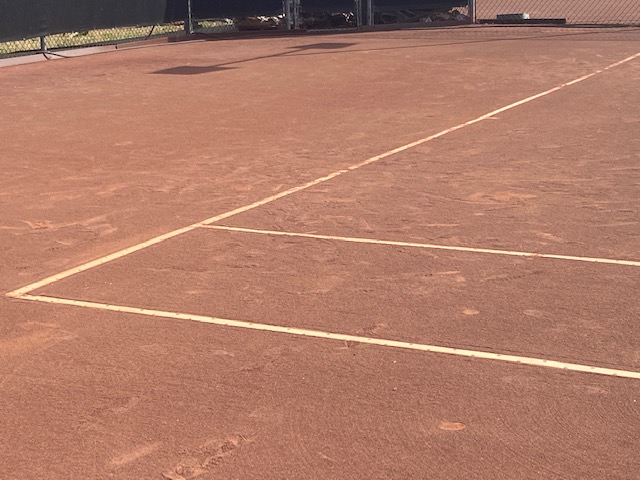Tennis News You Can Use
A couple of weeks ago the USTA sent an email addressed to all league and tournament players announcing that there will be no NTRP ratings updates published at the end of 2020. I believe that the majority of the regular readers of this site compete in adult tournaments or leagues, thus also received the email. Consequently, I am assuming that most are already aware that the “bump” will not occur this year.
The focus of the “Tennis New You Can Use” series that runs every Monday is not to report on the fact that something has occurred, but rather to dissect it for additional insight and whether there is something actionable that players should be doing as a result. What I am trying to do is to determine what the news events means and if there is something people should consider doing.
First of all, the arrival of this email resolved a point of debate that has been energetically discussed in the Fiend at Court household. Earlier this year, the USTA announced that players who had received an endorsement to NTRP Nationals in 2020 would receive an automatic bid for that event in 2021. The following excerpt is what I wrote about that topic at the time:
Combining endorsements over two years raises the prospect that a player could actually be bumped up twice before playing the NTRP Nationals. I was wondering if the letter signaled intent by the USTA that there would be no annual ratings adjustments this year, but decided that was probably not the case. For one thing, that is a long time to leave self-rated players hanging out with the S designation.
“NTRP National Championships 2020 and 2021,” Fiend at Court Post, August 17, 2020
With the benefit of hindsight, I now believe that the USTA had to have already been considering skipping NTRP ratings adjustments this year when that announcement was made. I think that the recent announcement of this final decision was probably a very hard one to make. Self-rated players have been left in purgatory for another year… maybe.
NTRP Algorithm Insights
The announcement illuminates some fundamental algorithm constraints with the NTRP system. Essentially it requires a statistically significant amount of data to produce meaningful calculations. The USTA Frequently Asked Question (FAQ) page associated with this recent announcement indicates that 80% of League Championships were cancelled in 2020. That included all championships at the National Level. In order for the NTRP algorithm to produce consistent results, it requires a significant number of inter-sectional matches to be played. My guess is that there are almost no matches in the system to prevent the NTRP calculations from potentially skewing within regional silos.
The USTA also reported that through 3 August, 62% fewer matches had been played when compared to the same time last year. A more stark way of stating that number is that only 38% of the “normal” match total has been played. It is worse when the consideration that play was not suspended until 23 March is also factored in. Presumably the numbers were running approximately the same up until that point. It was a cruel summer.
While the number of matches is clearly down, I think that the issue with running the NTRP calculations is more likely regional skewing of the data rather than achieving a statistically significant volume. As reinforcement to that position, the announcement also observed that play has not resumed in all Sections and Districts. Clearly that was crucial to the decision that was ultimately made.
Self Rated Players
I am surprised that a decision was made to not assign a computer rating to current Self-Rated players who had played a threshold of matches. Some of the self-rated players in my area are already lamenting that they cannot play in some events such as the Masters and Tri-Level next year.
The most significant down-stream effect might be an avalanche of dynamic disqualifications for self-rated players who are new to the sport or advancing quickly. It is not clear that it is possible for a self-rated player to reinitiate the self-rate process. In fact the USTA National League FAQ contains the following statement: “Once a player declares an initial self-rating, the player is bound by it for two years or until they generate a computer rating.”
An Appealing Loophole?
The 2020 NTRP Year End Rating FAQs indicates that the appeals process is not changing and that “Standard appeals processes will exist just as they do today. ” Thus it may be possible for a Self-Rated player who believes that their level should be adjusted either up or down to switch their rating from an S to an A. I think that the appeal is worth a shot for those players.
By the same token, there are a few computer rated players in my orbit who are grousing about being denied the opportunity an adjustment this year. This includes players who have been working hard to move up in the ratings as well as a few that have been carefully curating their play looking for a move in the downward direction. In those cases it also might be worth giving the appeal process a try.
Bottom Line
The absence of bump ups reveals that the NTRP algorithm most likely needs a level of inter-sectional play that was not achieved this year in order to reliably make adjustments. I believe that there simply wasn’t enough confidence in the data to lock in the current calculations for an entire year.
As I think through these machinations, I have come to the realization that it only matters if there is a return to normalcy in competitive play next year. Ultimately, that is the only win that matters in 2021.
- “2020 NTRP Year End Rating FAQs,” USTA National Hosted Web Page, viewed 9/25/2020.
- “Adult NTRP Ratings, Questions & Answers,” USTA National Hosted Web Page, viewed 9/25/2020.



